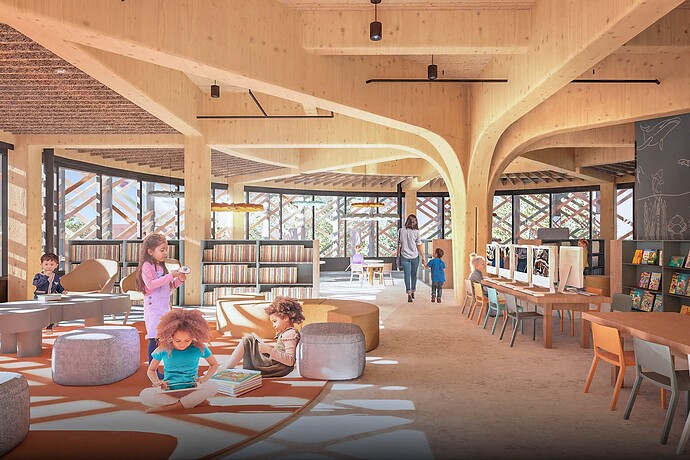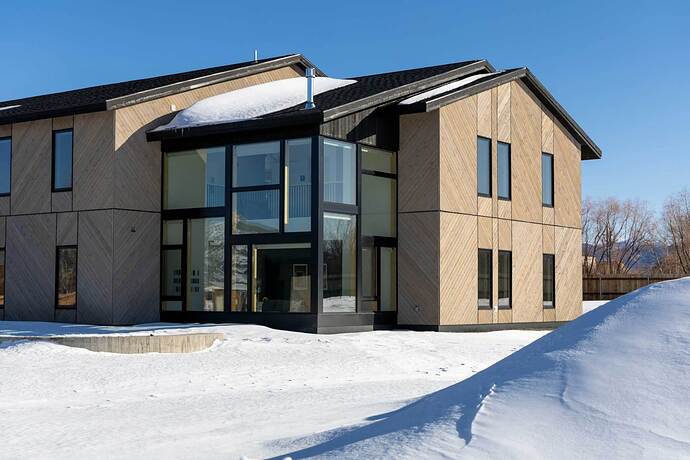On the whole, U.S. national forests have comprehensive sustainable management practices, thanks in part to strong laws passed through the legislative process, such as the National Forest Management Act of 1976 and the Endangered Species Act in 1973.
The U.S. is the largest producer of forestry products in the world. It is also the largest consumer in the world, and since it doesn’t produce enough, it is also the largest importer of wood products in the world. Wood is a global commodity, and different tree species are preferred for different products, so the U.S. is also one of the top wood exporters in the world, recent tariffs notwithstanding.
But U.S. forests are not just valued as a resource, they are valued by people for the joy they give us and the recreation opportunities they provide. Some people value the integral role they play in our living planet—supporting biodiversity, building soil, filtering water, sequestering carbon dioxide, and releasing oxygen. U.S. regulations have recognized the important role of national forests in balancing timber harvesting, recreation, watershed protection, and wildlife conservation since the mid-20th century.
The recent White House Executive Order requiring the Immediate Expansion of American Timber Production criticizes the policies that balance the use of our national forests and our purported inability to “fully exploit our domestic timber.” This order diminishes the value of our forests to that of just a commodity resource. This order runs the risk of us repeating mistakes our country has already learned.
Increasing domestic timber production could be positive—for rural economies, fire thinning, and storing carbon—and if we are going to consume wood, shouldn’t we do it with our own forests? Long-term wood production can be increased through ecological forestry management, and a short-sighted approach to rapidly increase wood production by ignoring good forestry practices will have a detrimental impact on the long-term economic viability of our forests.
Since the 1980s conservation groups and logging companies have worked more closely together, recognizing each other’s perspectives and shared values. Expediting the review of timber projects risks the insufficient evaluation of impacts to the vitality and productivity of the forests, as well as, to the habitats of endangered species, which is likely to see conservation groups and logging companies become confrontational once again.
The Haven Domestic Violence Shelter in Bozeman, Montana, uses lightweight and glue-laminated timber in its framing and is clad with locally sourced Douglas fir timber from Montana. (MASS Design Group)
As practitioners in the built environment, we encourage the use of domestic wood products as an opportunity to store carbon and support rural economies, but increased use of wood needs to be planned to balance the roles our forests have.
If the intention of the order is for the U.S. to be more self-reliant regarding wood products and reduce the need to import wood, we propose ways in which this can be achieved without ravaging our national forests.
1. Reduce Overall Consumption of Building Materials: Reusing buildings and the materials that already exist in our cities is the greatest opportunity to reduce material consumption and the climate and ecological impacts associated with consumption. Adaptive reuse of existing buildings must be the preferred strategy for developers and designers. We will still need new buildings and existing buildings will need new material added to them. If we built fewer new buildings, more buildings could be made from wood without needing to increase overall wood consumption.
2. Broaden and Diversify Our Building Materials: Wood is not our only option to create carbon-storing buildings that support rural economies. Building materials can be made from agricultural fibers such as straw, hemp, and perennial grasses. These materials can be grown and harvested annually as by-products from higher value crops. They can be farmed in a way that regenerates soil health, while increasing yields and profits from our farms. These products can replace extractive mineral, metal, and petrochemical products ubiquitous in buildings now, and offer alternatives to wood-based products. Plenty of these products are available already: New Frameworks builds a straw-structural insulated panel from materials sourced within Vermont; Americhanvre use a spray applied hempcrete to insulate buildings internally and externally; and Bamcore produce a bamboo and eucalyptus nearly hollow structural wall panel. We’re working to scale these alternative products through the Bio-Based Materials Collective.
3. Utilize different tree species: Indigenous peoples of the Pacific Northwest traditionally and regularly used about 300 plant species for myriad purposes, but wood in modern buildings is dominated by a handful of species like Southern Yellow Pine and Douglas Fir. We need a greater understanding and appreciation of the species we have in our various bio-regions, and as designers we need to specify for performance. We can also look outside of timberlands for wood. Each year in the U.S., 36 million trees are cut down in urban areas to make way for development. While urban trees have a lot of benefits, when they are cut down they could be utilized instead of disposed of. Organizations such as Cambium Carbon are identifying felled urban trees and feeding them into existing supply chains. Based in Halethorpe, Maryland, the organization works with municipalities, companies, and nonprofits to revolutionize tree management and reduce waste by salvaging lumber and creating “Carbon Smart Wood.”
4. Reduce Waste: Wood accounts for between 20–30 percent of all construction and demolition waste in the U.S. In the construction of a single-family home there is often between 2,500–5,500 pounds of wood waste. This is between two and four times the municipal waste generated by an average American per year. Reducing waste would decrease the need for new products, bring more value from our existing products, and potentially even reduce construction costs. Technology for reducing waste is already in practice. Urban Machine uses robotics solutions to reclaim wood, reducing the labour required to reuse wood members; and Dave Bennink’s Building Deconstruction Institute offers deconstruction services where they salvage wood framed buildings in panels, rather than individual pieces, preserving value that has already been added to the timber. The institute has trained hundreds in these practices and consulted on projects across the U.S.
5. Optimise Use: Reducing wood waste also means we have to optimize the designs for the products we have. The 69 buildings of the Rwanda Institute for Conservation Agriculture in Bugesera, Rwanda, were designed around a four-meter structural grid because this was the width of the kiln available. In the U.S., we are accustomed to conventional wood framing—2 inches by 6 inches spaced at 16 inches on-center, double top plates, triple headers, etc., but with advanced framing techniques we can easily reduce material use, and costs by as much as 30 percent. Offsite manufacturing methods also optimize material use, such as Luxembourg-based Leko Labs, and advanced manufacturing techniques, such as those by Chile-based Strong by Form, can produce stress-tailored material efficient components. A considered federal policy could scale the use of these technologies in the U.S.
We can build sustainably while safeguarding forests. We ask anyone within the built environment ecosystem to engage with these strategies to protect the forests that so many others have protected till now. We implore the Secretary of the Interior and the Secretary of Agriculture to create guidelines in addition to the order, acknowledging learnings from our past mistakes. We urge our colleagues to prioritize these ideas, regardless of what might be the outcome of federal action.
https://www.archpaper.com/2025/04/us-preserve-forests-old-techniques-technologies/

